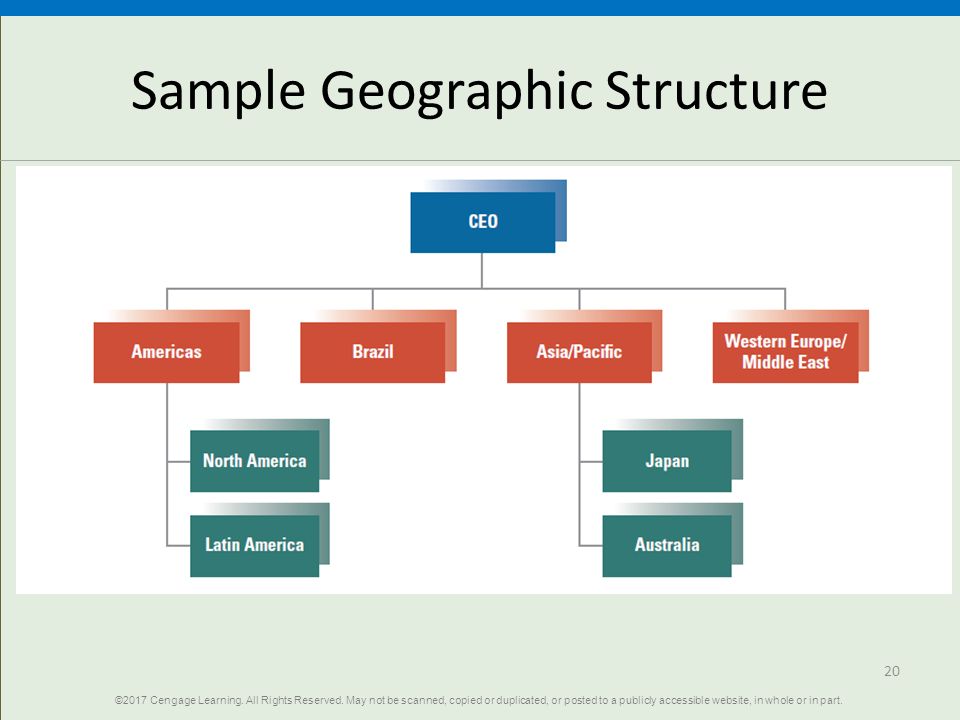Geographic Structure
Another prominent basis for structural grouping is the organization’s users or customers. The most common structure in this category is geography. Each region of the country may have distinct tastes and needs.
Each geographic unit includes all functions required to produce and market products or services in that region.
Large nonprofit organizations such as the Girl Scouts of the USAOpens in new window, Habitat for HumanityOpens in new window, Make-A-Wish FoundationOpens in new window, and United Way of AmericaOpens in new window frequently use a type of geographic structure, with a central headquarters and semiautonomous local units.
The national organization provides brand recognition, coordinates fund-raising services, and handles some shared administrative functions, while day-to-day control and decision making is decentralized to local or regional units.
World Bank uses a complex type of geographic divisional structure, organized country by country and region by region. To encourage greater coordination and collaboration across regions, Jim Yong Kim, who served as World Bank president from 2012 until early 2019, implemented a sweeping reorganization that overlaid the structure with 14 “global practices,” including agriculture, energy, and education, that cut across the bank’s different projects, funds, and geographies.
Similarly, multinational corporations may create self-contained units for different countries and parts of the world. Figure X-1 shows an example of a geographic structure for a cosmetics company.
 Figure X-1 Geographic Structure for Cosmetics Company | Credit — Slide Player Opens in new window
Figure X-1 Geographic Structure for Cosmetics Company | Credit — Slide Player Opens in new window
|
This structure focuses managers and employees on specific geographic regions and sales targets. Walmart Stores are organized by geographic regions, such as Walmart Japan, Walmart India, Walmart Brazil, Walmart China, and Walmart Asia.
Until recently, U.S. operations were organized largely by function, but managers restructured U.S. operations into three geographic divisions, West, South, and North, making the U.S. organization more like how Walmart operates internationally. Using a geographic structure helps the company expand into new markets and use resources more efficiently.
The strengths and weaknesses of a geographic divisional structure are similar to the divisional organizationOpens in new window characteristics. The organization can adapt to the specific needs of its own region, and employees identify with regional goals rather than with national goals. Horizontal coordination within a region is emphasized rather than linkages across regions or to the national office.
The Series:
- Organization Structures Opens in new window
- Functional Structure Opens in new window
- Divisional Structure Opens in new window
- Matrix Structure Opens in new window
- Geographical Structure Opens in new window
- Virtual Network Structure and Outsourcing Opens in new window
- Holacracy Team Structure Opens in new window
- Adhocracy Opens in new window
- Research data for this work have been adapted from the manual:
- Organization Theory & Design By Richard L. Daft

